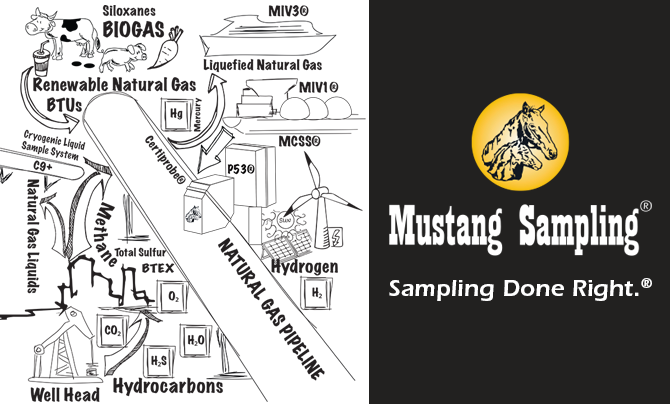The importance of analysis has never been higher as natural gas sources evolve and the constituents within it are less predictable and more varied than ever before.
by Kevin Warner, Ph.D., in the 2023 May/June edition of BIC Magazine.
Can you imagine what would happen if an entire industry spent decades defining a set of rules to govern trade, safety, and compliance, then suddenly changes within the industry itself rendered the rules to be inadequate, or at least incomplete? And what if social and political pressures made it difficult to change the rules? In many ways this is what has happened within the natural gas industry as biogas (in the form of Renewable Natural Gas, or RNG) has entered the system and hydrogen pilots are well on their way to add to the ever-changing complexion of natural gas components.
Natural gas has been produced for decades from fossil deposits deep within the earth, originally as a byproduct of drilling for oil (as an “associated” product) and more recently independently from Shale formations. It is a mixture of different hydrocarbons, although mainly methane, and some of the most valuable components are stripped from the gas mixture as it is processed along the way to distribution for heating. The position of natural gas as a global energy source continues to grow since methane is a cleaner and less carbon intense fuel than oil or coal. The rise of natural gas as a source of fuel to product electricity is well known and continue to gain traction globally. The standards and practices associated with natural gas measurement and analysis have been based on the flow of gas from fossil origins in production fields, to gas plants, to transmission pipelines and distribution systems in a very predictable fashion. Recently the goal to reduce carbon emissions further and to eliminate global dependence on fossil fuels has fostered the introduction of Renewable Natural Gas (essentially methane derived from the decomposition of organic matter). Additionally, as renewable (and often “excess”) electricity is produced from solar and wind farms, the production of hydrogen gas through electrolysis is possible, which ultimately needs to be introduced into the natural gas network. These two changes in the production of gaseous fuels into the traditional pipeline system require modifications to existing measurement and analysis techniques.
The introduction of renewable natural gas into pipeline and distribution systems has raised the level of analysis necessary to maintain safe operations. Renewable natural gas (RNG) is neither renewable nor is it natural gas, but rather methane generated from waste products that is cleaned to a level suitable for injection into a natural gas pipeline. The RNG must meet the same tariff requirements of any other produced gas prior to injection, but since its source is different, there are potentially other hazardous components. Siloxanes, a group of organic silicon-oxygen containing compounds, are particularly harmful to rotating equipment when combusted because of their abrasive quality. Mercury is another potentially harmful metal that might be present from landfill sourced RNG, along with other solvents diluted into the gas stream. All these additional contaminants must be measured as warranted prior to introduction of the RNG into a pipeline, but often the tariff language does not specify the limit or timeliness of the measurement. As new instruments and techniques are developed to address the rising problem, it is not always clear how they will be applied in the field or at what level.
Hydrogen measurement and analysis is particularly challenging within the historical framework. Since hydrogen gas is not normally present in fossil fuel mixtures, most analyzers assume it is not present (therefore do not detect it) and in many cases use hydrogen as part of their own process, rendering any measurement useless. For example, if a gas chromatograph uses hydrogen as a carrier gas, the detection of hydrogen in the sample stream becomes very complicated. The problem has been exacerbated recently as helium (another common carrier gas) has become scarce and many end users have converted their analyzers to use hydrogen. The measurement of hydrogen and its safe handling within measurement and analyzer systems continues to be a challenge.
Safety will remain the primary objective of the natural gas (or otherwise) transportation and distribution industries for decades to come. As such, measurement and analysis systems will continue to evolve rapidly to evaluate the ever-changing landscape of energy sources.
Read the published version by Kevin Warner, Ph.D., in the 2023 May/June edition of BIC Magazine.


